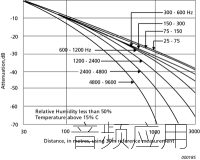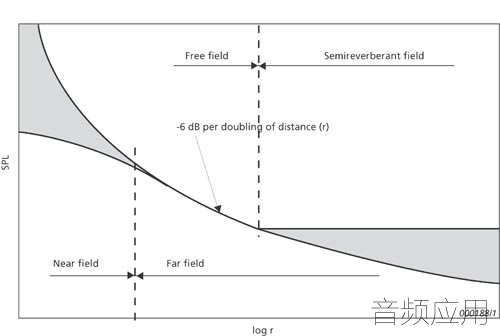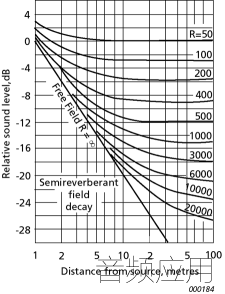|
|

楼主 |
发表于 2008-12-16 19:53:23
|
显示全部楼层
see STFT.
Side Lobe
When a weighting window is applied to a frequency domain function, side lobes can be seen on either side of the centre frequency. The dominance of these depends on the type of window in use.
Side-lobe Fall Off Rate
The rate at which side-lobes fall off, normally quoted in dB/decade.
Sideband
In frequency domain functions, pairs of frequencies with similar amplitude that appear equally spaced on either side of a centre frequency.
Signal
An electric voltage or current that is an analog of the vibration or sound being measured.
Signal Enhancement
If a part of a repetitive signal that has been identified by a trigger is averaged in the time domain, the signal is conserved while the additive noise cancels out. The main applications are waveform analysis, reduction of background noise, enhancement of orders, and separation of mechanical and electrical vibrations.
Signal Ground Coupling
Determines whether an acquisition front-end’s channels are earthed. Grounding sets a channel for single-ended grounding, while floating disconnects the screens and ground connections.
Signal Groups
User-defined collections of signals. A group can be treated as a single entity allowing the same measurement criteria and functions to be applied to each signal in the group in a single operation.
Signal Names
A signal name is the name given to a user-defined analysis channel. This name is user-definable, allowing descriptive names that represent the measurement situation to be used.
Signal-to-noise Ratio
The difference between the nominal or maximum operating level and the noise floor in dB.
Signals
To analyse a physical input, a signal must be defined on the (physical) channel concerned. A signal allows a number of different types of analyses to be made on the same channel with the same pre-processing applied.
Simple Harmonic Motion
A periodic motion whose displacement varies as a sinusoidal function of time.
Simulation Prediction
In structural dynamic testing, the ultimate goal of system identification is to create a dynamic mathematical model. This, in turn, may be used in simulations or to predict answers to specific questions.
Sine Wave
A signal that follows the path of a sine function. This can be a swept or have a fixed frequency. A sweep can be either linear or logarithmic. A periodic wave related to simple harmonic motion.
Single Degree of Freedom (SDOF)
A system where only one input can vary and is sufficient to describe the state of the system. SDOF systems are a very important concept for modelling structures, and often provide a sufficient model for a limited frequency band around a mode.
SISO (Single-input/Single-output)
This describes a model where only one degree-of-freedom is included. This is used in both dynamic and measurement models.
Slap Back
A discrete reflection from a nearby surface.
Smearing
This occurs when, for example, the speed of a machine is not stable while measurements are being made.
Sociocusis
Loss of hearing caused by noise exposures that are part of the social environment, exclusive of occupational-noise exposure, physiological changes with age, and disease.
SONAH
An abbreviation for Statistically Optimal Near-field Acoustic Holography, which is an implementation of Acoustical Holography not using spatial Fourier transforms. See also Acoustic FRF
Sone
A linear unit of loudness. The ratio of loudness of a sound to that of a 1 kHz tone 40 dB above the threshold of hearing. One sone is the loudness of a sound whose loudness level are 40 phons. Loudness is proportional to the sound’s loudness rating, for example, two sones are twice as loud as one sone. The unit of measurement for subjective loudness.
Sound
Mechanical disturbance, propagated in an elastic medium, of such character as to be capable of exciting the sensation of hearing. The propagation of a sound wave can be measured in terms of the fluctuations in pressure with which it is associated. The measure of sound pressure is commonly the root mean square (RMS) value but may also be the instantaneous or peak value.
Sound Absorption
The product of absorption coefficient and surface area of a material. The unit is the sabin. Designates the amount of sound absorbed by a material.
Sound Absorption Coefficient
The practical unit between 0 and 1 expressing the absorbing efficiency of a material. It is determined experimentally.
Sound Attenuation in Air

Approximate correction for air attenuation including the inverse square law.
Sound Concentration
The focusing of sound waves caused by reflections from a concave surface, or any other surface that focuses the sound waves in a specific direction.
Sound Exposure (E)
The quantity of sound impinging on the ear over an interval of time. It is directly proportional to the A-weighted sound intensity (that is, proportional to the square of A-weighted RMS sound pressure) and directly proportional to the duration of the sound. The SI unit is Pa2.s and the practical unit for sound exposure meters is Pa2.h. For a given duration, each increase of 10 dB(A) in sound pressure level corresponds to a tenfold increase in E. A sound of 85 dB(A) lasting for 8 hours (h) produces 1 Pa2.h of sound exposure.
Sound Exposure Level (LEX, ref. duration)
The A-weighted sound exposure expressed in decibels relative to a reference duration. In the special case of constant noise that lasts for the reference duration, it is numerically equal to the sound pressure level (Leq). Different terms have been used to define precisely the same quantity.
Sound Exposure Meter
A small instrument designed to be worn by an individual to provide a measure of the accumulated sound exposure received by the wearer while moving about during the workday. The instrument is calibrated in Pa2.h. If the meter is worn for only a representative part of the working day, the reading must be corrected appropriately. Noise dosemeter (or dosimeter) is a more general term for instruments having a similar purpose but not necessarily measuring the physical quantity E or being calibrated in percentage of maximum permitted daily exposure and therefore can vary from country to country.
Sound Fields

The above graph illustrates the fundamentals of noise generation and propagation that must be kept in mind when measuring noise emission. In the near field, the shaded area shows that noise emission cannot be measured reliably. But further away in the far field, measurements are reliable and the level decreases 6 dB per doubling of distance (spherical spreading due to inverse square law) as long as the environment is effectively free field. When the environment becomes semi-reverberant due to reflections, which add to the level of the direct sound wave, noise emission measurements again become unreliable.
Sound Intensity
The rate of sound energy transmission per unit area in a specified direction. The product of the particle velocity and pressure; it is specified in units of power per unit area and is a vector quantity describing the level and direction of the acoustic energy.
Sound Intensity Probe
Used to determine the sound power. Brüel & Kjær’s sound intensity probes consist of two closely spaced microphones. This enables the pressure gradient to be measured.
Sound Level
The weighted sound pressure level obtained by the use of a sound level meter and frequency weighting network, such as A, B, or C as specified in ANSI specifications for sound level meters (ANSI Sl.4-1971, or the latest approved revision).
Sound Level Meter (SLM)
An instrument, usually hand-held, designed to measure a frequency-weighted value of the sound pressure level in accordance with an accepted national or international standard. It consists of a microphone, amplifier, square-law rectifier, averaging circuits and indicating instrument, having a specified performance in respect of directivity, frequency response, rectification characteristic, and time-weighted averaging. The instrument is normally equipped with F, S and possibly (time-weightings as an aid to measuring fluctuating sounds. With suitable circuitry it can also perform frequency analysis, typically either with octave or one-third octave bands. See also Integrating-averaging sound level meter, Time weighting.
Sound Level Meter Weighting Networks

Sound Level Prediction in Semi-reverberant Fields

Sound Power
The total sound energy radiated by a sound source per unit time. The unit of measurement is the watt.
Sound Power Level (LW or PWL)
The level, in dB, at which a source produces sound energy per unit of time, usually given in octave bands. A power expressed in dB above the standard reference level of 1 picowatt. Sound Power Level = 10 log10 (W/W0), where W is the emitted power and W0 is the reference power (10-12 W).
Sound Pressure
The instantaneous difference between the actual pressure produced by a sound wave and the average or barometric pressure at a given point in space. A dynamic variation in atmospheric air pressure. It is a scalar entity describing the level of the sound pressure. At a point in a medium, the difference between the pressure existing at the instant considered and the static pressure. Sound pressure is measured in pascals (Pa), 1 Pa = 1 newton per square metre (N/m2).
Sound Pressure Level (SPL)
Sound Pressure Level = 20 log10 (p/p0) dB: The sound pressure level of a sound in decibels, is equal to 20 times the logarithm to base 10 of the ratio of the RMS sound pressure to the reference sound pressure 20 mPa (2 × 10-5 Pa).
Sound Quality Assessment
Consists of subjective and objective tests, and analysis. See Psychoacoustic Test Bench.
Sound Quality Metrics
Objective algorithms such as loudness, sharpness, etc., that are used to characterise sound quality.
Sound Spectrograph
An instrument that displays the time, level, and frequency of a signal.
Sound Transmission Class (STC)
A single-number rating system used to compare the sound-isolating characteristics of partitions used to separate occupied spaces. The preferred single figure rating system designed to give an estimate of the sound insulation properties of a structure or a rank ordering of a series of structures. Used to define sound transmission loss of a wall or partition. Expressed in decibels, it is 10 times the logarithm to base 10 of the reciprocal of the sound transmission coefficient of the configuration.
Sound Transmission Loss
Ratio of the sound energy emitted by an acoustical material or structure to the energy incident upon the opposite side.
Source Group
A group of related source points.
Source Point
A particular position (and in some cases, direction) on the structure where an excitation point is applied. The excitation is either a force (structure-borne contribution) or volume velocity (airborne contribution). Example: “Front Engine Mount Vertical 2Z-”.
Source Substitution method
A method of analysing airborne contributions, wherein a FRF matrix is used to estimate operating point source strengths. Also referred to as indicator method.
Source-to-Indicator Matrix
A matrix of transfer functions (Hxv) used to estimate operating source strengths from indicator operating data
Spacers
A generic term for any coupling that has 2 flex planes separated by a connecting shaft without bearings or other supports (between the flex points). Sometimes called an insert or spider.
Spatial Transformation of Sound Fields
|
|
 |小黑屋|手机版|音频应用官网微博|音频应用
( 鄂ICP备16002437号 )
|小黑屋|手机版|音频应用官网微博|音频应用
( 鄂ICP备16002437号 )